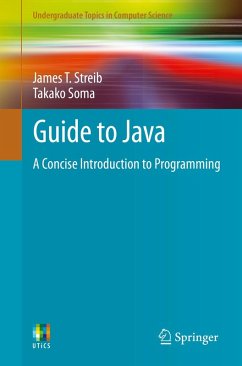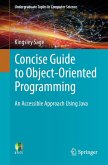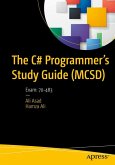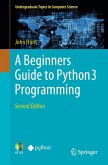Seeking to learn quickly how to program in Java without prior experience? This Guide to Java presents a focused and accessible primer on the fundamentals of Java programming, with extensive use of illustrative examples and hands-on exercises.
Addressing the need to acquire a good working model of objects in order to avoid possible misconceptions, the text introduces the core concepts of object-oriented programming at an early stage, supported by the use of contour diagrams. Each chapter has one or more complete programs to illustrate the various ideas presented, and to help readers learn how to write programs on their own. Chapter summaries and practical exercises are also included to help the reader to review their progress and practice their skills.
Topics and features:
This concise and easy-to-follow textbook/guide is ideal for students in an introductory programming course. It is also suitable as a self-study guide for both practitioners and academics.
Addressing the need to acquire a good working model of objects in order to avoid possible misconceptions, the text introduces the core concepts of object-oriented programming at an early stage, supported by the use of contour diagrams. Each chapter has one or more complete programs to illustrate the various ideas presented, and to help readers learn how to write programs on their own. Chapter summaries and practical exercises are also included to help the reader to review their progress and practice their skills.
Topics and features:
- Provides an introduction to variables, input/output, and arithmetic operations
- Describes objects and contour diagrams, explains selection structures, and demonstrates how iteration structures work
- Discusses object-oriented concepts such as overloading and classes methods, and introduces string variables and processing
- Illustrates arrays and array processing, and examines recursion
- Explores inheritance and polymorphism, and investigates elementary files
- Presents a primer on graphical input/output, discusses elementary exception processing, and presents the basics of Javadoc
- Includes exercises at the end of each chapter, with selected answers in an appendix, and a glossary of key terms
- Provides additional supplementary information at an associated website
This concise and easy-to-follow textbook/guide is ideal for students in an introductory programming course. It is also suitable as a self-study guide for both practitioners and academics.
Dieser Download kann aus rechtlichen Gründen nur mit Rechnungsadresse in A, B, BG, CY, CZ, D, DK, EW, E, FIN, F, GR, HR, H, IRL, I, LT, L, LR, M, NL, PL, P, R, S, SLO, SK ausgeliefert werden.
From the book reviews:
"This book ... really hits the mark for a basic introduction to Java programming. ... This reviewer was very impressed with the organization of the topics and the incremental way that the presented concepts build upon each other. This is a very good resource for beginning Java programmers, and those who know any other programming language will find it a breeze to read. Summing Up: Highly recommended. Lower-division undergraduates, two-year technical program students, professionals/practitioners, and general readers." (F. H. Wild III, Choice, Vol. 52 (3), November, 2014)
"This book ... really hits the mark for a basic introduction to Java programming. ... This reviewer was very impressed with the organization of the topics and the incremental way that the presented concepts build upon each other. This is a very good resource for beginning Java programmers, and those who know any other programming language will find it a breeze to read. Summing Up: Highly recommended. Lower-division undergraduates, two-year technical program students, professionals/practitioners, and general readers." (F. H. Wild III, Choice, Vol. 52 (3), November, 2014)









